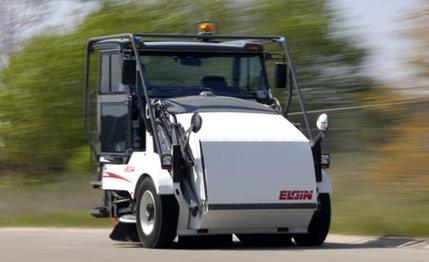
 Specialty File
Specialty File
Local municipalities in the market for a magnificent Elgin Pelican street sweeper were leery of the recent model makeover-the first in 17 years-lest its newly sexy shape alert cynical taxpayers to its $140,900 price.
The allure has to do with its Yao-like height of 118.5 inches, or nearly 10 feet, a cabin that is essentially a floor-to-ceiling expanse of glass, and the thing's giant nose, which is indeed pelicanlike in its startling protuberance. Plus, it has two steering wheels. And with three steps placed reasonably close together and a sizable grab handle, even babes in four-inch heels who cannot resist the hormonal pull of the Pelican can hoist themselves into the cabin. Talk about excitement.
Elgin's first sweeper was introduced in 1914 and has been revised just 10 times.
The original brochure for the Elgin motor sweeper declared unequivocally: "The History of all Experiments and Practice seems to demonstrate the fact that a good stiff Broom accompanied by the proper Pick-Up arrangement, and scientific means for dampening the Sweepings in advance of the Broom, affords the Ultimate Method for removing refuse from Paved streets in a Practical manner and at a Minimum of Cost." Apparently, that statement is righteous, because the basics of the sweeper have barely changed from then to now. A 66.0-inch-wide main broom under the driver sweeps debris forward to a conveyor belt that moves the roadside flotsam into the dump hopper in the Pelican's nose. The hopper holds up to 3.6 cubic yards of detritus and can lift a 9000-pound payload nine and half feet in the air and dump it. Right behind the hopper is a 220-gallon water tank used to suppress dust caused by this whirling operation. From 1936 onward, the Elgin sweeper has come equipped with one or two side, or gutter, brooms to keep dirt from spilling out the sides and to give curbs an extra-good scrub.